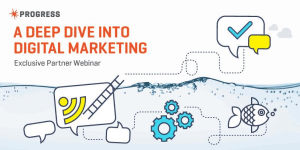WEBINAR: The Four Keys to Successful Digital Marketing


Tomorrow I’ll be sharing my very latest thoughts on the evolution of marketing. If you’re free at 10am ET on Wednesday, February 25, please join me!
We’ll start by defining digital marketing and exploring its history, present incarnation and future. Then we’ll describe one popular approach to digital marketing, called the “digital marketing hub,” and compare it with other approaches. Then we’ll talk about POE. Not as in Edgar Allen, but as in Paid, Owned and Earned. Next, we’ll explore all of the various ingredients of successful digital marketing programs. Finally, we’ll close with a discussion about the tools and techniques that work best for digital marketing.
It’s a lot for one hour, but by the end you’re going to walk away with a solid foundation for understanding, evaluating and implementing a digital marketing hub for your organization.
What is the Digital Marketing Hub?
The Digital Marketing Hub is the latest evolution of marketing technology that’s been growing and changing since the 1970s. Take your basic customer database and digitize it. That’s what happened in the 1970s as telesales technology took off. Then port it to the personal computer. That’s what happened in the 1980s with contact management software like ACT! Then add collaboration, lead scoring and some reporting capabilities and you have the beginnings of sales force automation, which really took off in the 1990s.
Then port it to the web and add lifecycle management and you have a modern customer relationship management (CRM) system, which became popular in the 2000s. Add search, more web savvy and some automation scripts based around lead scoring, and you have your basic marketing automation system, which became popular in the early 2010s. Then add omni-channel support and mix in some consumer empowerment and you have your basic digital marketing hub. Simple enough, right? No? Okay, let’s try Gartner’s definition, since they created a Magic Quadrant for Digital Marketing Hubs last December:
A digital marketing hub provides marketers and applications with standardized access to audience profile data, content, workflow elements, messaging and common analytic functions for orchestrating and optimizing multichannel campaigns, conversations, experiences, and data collection across online and offline channels, both manually and programmatically.
It typically includes a bundle of native marketing applications and capabilities, but it is extensible through published services with which certified partners can integrate.
So how do you get started with a Digital Marketing Hub? Well, according to Gartner, it has four critical components. To paraphrase these, I created the Four Es: Engagement, Execution, Extensibility and Evaluation. In essence:
- Engagement. First, you have to create a master audience profile (a single view of the customer) — A consistent view of customers (including anonymous ones) across marketing programs and processes is the baseline for effective communication. Good Digital Marketing Hubs work with both 1st- and 3rd-party data to paint this picture.
- Execution. Then, you must enable a consistent workflow and collaboration process (you must use the same content engine). It’s critical to fuel marketing programs through ideation, planning and execution; as well as the creation, curation and cultivation of content, internally and with partners. Uniform collaboration and workflow break down silos.
- Extensibility. Then, you must be able to orchestrate your efforts across all your channels. While specialized channel-specific execution is sometimes prudent, consumers are engaging on their own terms, freely switching among channels and devices. To support this, multichannel marketing programs need to account for the full context of each interaction in real time.
- Evaluation. Finally, you must unify your measurement and optimize your program. Unless marketing programs are measured by a common set of rules, marketers will squander resources and lose out to more-efficient competitors. Companies must trace a thread between investments and outcomes and to enable marketers to optimize investments to the highest yield.
Want more? Sign up for my webinar tomorrow!

Todd Van Hoosear
Todd Van Hoosear is vice president of public relations for Eric Mower + Associates' Boston office, where he helps clients in the engineering, mobile, cloud, networking, consumer technology and consulting spaces bring new ideas – and new takes on old ideas – to the market. He also teaches new media and public relations at Boston University, and serves as a Fellow at the Society for New Communications Research. Find him on Twitter at @vanhoosear.
